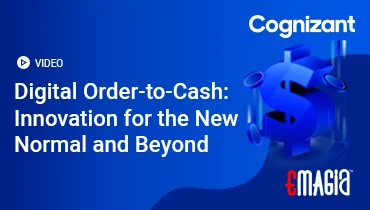Introduction: Understanding Proactive Data Collection
In today’s data-driven world, the ability to collect and utilize information proactively is paramount. “Collect Proactively” refers to the strategic approach of anticipating information needs and actively gathering relevant data before it becomes essential. This proactive stance ensures informed decision-making, enhances efficiency, and provides a competitive edge.
What is Proactive Data Collection?
Proactive data collection involves the anticipatory gathering of information to meet future needs. Unlike reactive approaches that respond to events after they occur, proactive strategies aim to foresee potential scenarios and collect pertinent data in advance.
Reactive vs. Proactive Data Collection
- Reactive: Responding to data needs after an event has occurred.
- Proactive: Anticipating data requirements and collecting information ahead of time to inform decision-making.
Benefits of Collecting Proactively
Implementing a proactive data collection approach offers numerous advantages:
Enhanced Decision-Making
Access to timely and relevant data allows organizations to make informed decisions swiftly, reducing the risk of errors and missed opportunities.
Improved Operational Efficiency
By anticipating data needs, organizations can streamline processes, reduce redundancies, and allocate resources more effectively.
Competitive Advantage
Proactively collected data enables businesses to identify market trends and customer preferences early, allowing for strategic positioning ahead of competitors.
Risk Mitigation
Early detection of potential issues through proactive data collection helps in implementing preventive measures, thereby minimizing risks.
Regulatory Compliance
Maintaining up-to-date and accurate data supports adherence to regulatory requirements, avoiding potential legal complications.
Key Components of a Proactive Data Collection Strategy
Developing an effective proactive data collection strategy involves several critical elements:
Clear Objectives
Define specific goals for data collection aligned with organizational needs and strategic plans.
Data Governance Framework
Establish policies and procedures to ensure data quality, security, and compliance throughout the data lifecycle.
Integration of Advanced Technologies
Utilize tools such as Artificial Intelligence (AI) and Machine Learning (ML) to automate data collection and analysis processes.
Cross-Functional Collaboration
Encourage collaboration among departments to identify data needs and share insights, fostering a data-driven culture.
Continuous Monitoring and Evaluation
Regularly assess the effectiveness of data collection strategies and make necessary adjustments to improve outcomes.
Implementing Proactive Data Collection in Your Organization
To successfully adopt a proactive data collection approach, consider the following steps:
Assess Current Data Practices
Evaluate existing data collection methods to identify gaps and areas for improvement.
Define Data Requirements
Determine the types of data needed to support organizational objectives and decision-making processes.
Select Appropriate Tools and Technologies
Choose data collection and analysis tools that align with your organization’s needs and capabilities.
Train Staff and Promote a Data-Driven Culture
Provide training to employees on the importance of proactive data collection and encourage data-informed decision-making.
Monitor Progress and Refine Strategies
Continuously track the effectiveness of data collection efforts and make adjustments as necessary to enhance performance.
Challenges in Proactive Data Collection and How to Overcome Them
While proactive data collection offers significant benefits, organizations may encounter challenges:
Data Overload
Solution: Implement data management systems to organize and prioritize information effectively.
Ensuring Data Quality
Solution: Establish data validation processes and regular audits to maintain accuracy and reliability.
Privacy and Security Concerns
Solution: Adopt robust data security measures and comply with relevant data protection regulations.
Resource Constraints
Solution: Leverage automation and scalable technologies to optimize resource utilization.
Tools and Technologies Supporting Proactive Data Collection
Several tools and technologies can aid in implementing proactive data collection strategies:
- AI and ML Algorithms: Automate data analysis and provide predictive insights.
- Data Management Platforms: Centralize data storage and facilitate easy access and analysis.
- Customer Relationship Management (CRM) Systems: Track customer interactions and preferences for personalized engagement.
- Business Intelligence (BI) Tools: Visualize data trends and support strategic decision-making.
How Emagia Elevates Proactive Data Collection for the Digital Enterprise
Title: Emagia’s Intelligent Platforms: Powering the Future of Proactive Collections
In the realm of proactive data collection, Emagia stands out by offering a comprehensive AI-powered platform that transforms how organizations collect, analyze, and act on financial data—especially in the Order-to-Cash (O2C) lifecycle.
AI-Driven Automation
Emagia’s platform integrates AI, Machine Learning, and NLP to automate and streamline data collection. This ensures faster insights into customer behavior, payment risks, and cash flow predictions.
Digital Assistants for AR
Through Gia – Emagia’s Digital Finance Assistant, organizations can proactively collect real-time data from customer interactions, monitor AR activity, and trigger timely follow-ups, ensuring minimal revenue leakage.
Predictive Analytics for Collections
With Emagia, finance teams benefit from predictive analytics that forecast delinquency risks and prioritize accounts, enabling teams to take proactive measures before issues arise.
Seamless Integrations
Emagia supports seamless integration with ERP systems like SAP, Oracle, and NetSuite—ensuring continuous, proactive data flow across finance operations.
Comprehensive Dashboards & Reporting
Gain access to intuitive dashboards that offer real-time visibility into KPIs, aging buckets, DSO, and more—allowing strategic decisions with confidence.
Global Reach with Local Precision
With support for multi-currency and multilingual capabilities, Emagia empowers global enterprises to collect proactively across geographies.
Frequently Asked Questions (FAQs)
How does proactive data collection differ from reactive?
Proactive collection anticipates needs and collects data in advance, while reactive approaches respond after an event or issue has occurred.
What tools are best for collecting proactively?
AI-powered platforms like Emagia is excellent for automating and optimizing proactive data strategies.
Why is proactive collection important for AR teams?
It helps AR teams prioritize accounts, predict late payments, and reduce DSO—ultimately improving cash flow and working capital.
Can small businesses benefit from proactive data collection?
Absolutely. Small businesses can use CRM tools, basic automation platforms, and predictive dashboards to make smarter decisions early on.
What are the main risks of not collecting proactively?
Delays in decision-making, missed opportunities, compliance failures, and increased operational inefficiencies.
Conclusion: Empowering Your Organization to Collect Proactively
Adopting a proactive data collection strategy isn’t just a technological shift—it’s a cultural transformation. By anticipating future needs and leveraging modern tools, organizations can stay ahead of the curve, reduce risks, and capitalize on opportunities faster than competitors.
From enhanced decision-making to improved cash flow and customer satisfaction, the benefits of collecting proactively are immense. Whether you’re a CFO, AR manager, or data strategist, embracing this approach will redefine the way you operate in the digital age.



